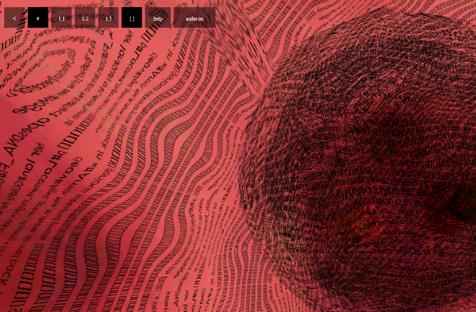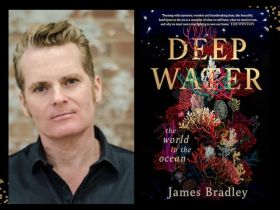Now so many of us read on tablets we can hyperlink, watch video or retrieve background as we go. But is the traditional experience of reading resisting the bells and whistles of hyperfiction?
When digital reading platforms first entered the world of publishing, Luddites and technophiles engaged in a face off over the form of literature that would be read on these new devices. The Cassandras predicted the death of print, the loss of quality publications, even an illiterate future. But it turned out if Jane Austen is read on a Kindle, Elizabeth Bennett still gets her man. Reading was still reading.
eReaders were a baby step into the world of digital literature, little more than electronic imitations of their paper predecessors with a dictionary as the only real add-on.
But with the adoption of eTablets over dedicated technologically limited eReaders, the landscape has changed. An eTablet is a multi-functional device that supports a wide range of media. It is now possible for a publication to offer multimedia add-ons or branched organisation, where the reader gets to select a pathway in a kind of choose-your own adventure. A click can take you to an illustrative video, a sound-clip or a different narrative line.Does this mean it’s finally time for hyperfiction?
Not necessarily. While eTablets can give us all sorts of additional functions in practice they have so far largely continued the trend of print book replication; and most consumers seem content with this traditional experience.
Max Whitby, co-founder and CEO of Touch Press Publishing, believes hyperfiction has limited appeal in the traditional form of hyperlinked navigation. ‘I am more interested to put myself in the hands of a storyteller and allow them to design a narrative journey that I will follow in their company,’ said Whitby.
Switch on, switch off
Publishers are introducing multi-media enhancements but for mainstream readers they need to be managed to they do not interfere with the reading experience. Touch Press’s enhanced ePublication of TS Eliot’s The Wasteland is an example.
‘Many people have heard of TS Eliot and know that they should read his poetry, but often when they try they find it incomprehensible and hard to get into. In the app edition we created with Faber and Faber, we have included a brilliant specially-filmed performance by Fiona Shaw, perfectly synchronised line by line to the poem,’ said Whitby.
The hypertext Wasteland also includes expert interpreters and explanatory footnotes, available through swipe action. ‘We present the poem set in a framework of accessible explanation that is there for those who want it. And importantly that immediately disappears when you just wish to enjoy the poem.’
The fiction experience
Mark Bernstein, founder and Chief Scientist of Eastgate Systems, a prolific hypertext publisher, said the opportunities to dig deeper into detail makes hypertext a natural for long form non-fiction and memoir, where hyperlinks replace footnotes. Huge depth of detail can be retrieved by the interested reader without clogging up the main narrative for everyone else.
In the case of fiction, the value of hyperlinks is less intuitive. Part of the experience of reading fiction is to be carried along into a world of someone else’s making. The conscious act of clicking or tapping on links and making decisions can be jarring, removing the reader from the story world.
But with the daily use of the internet as a major reading source for information and entertainment, the way people become immersed in text may be changing. Making narrative choices may soon be as natural as turning a page.
As readers spend hours navigating through social media and information sites, jumping from topic to topic with whimsical abandonment, they disappear down their own personal rabbit hole of data. This creates an interactive and immersive experience within a literary world of the reader’s making.
Nowadays, users are so accustomed to using links as a means of navigation the mechanical act of clicking or tapping on a link is second nature. Similarly, hypermedia mixed with text is such a common sight that it is often engaged with automatically. It is becoming possible to focus on branched hyper-rich content without losing sense of a narrative stream.
Making fiction for the internet generation
Mez Breeze, a digital artist and co-creator of #Carnivast, an interactive electronic literature application, believes the modern reader wants to be more engaged in the process.
‘The act of reading has now become acceptably segmented, immersive and interactive all at the same time. Nowadays, we don’t just sit passively and absorb a book or text: many of us read with the key desire to broadcast our own opinion/comments/tweets regarding the material [or even our own creative take in case of fan fiction],’ said Breeze.
Breeze’s recent work #Carnivast, a collaboration with UK based media artist Andy Campbell, is a virtual environment filled with a mix of media and experiences.
‘The initial work stemmed from a “codewurk” – or code poetry – I had initially created in 2011. Andy and I reinterpreted this original work as an abstract 3D/literary synthetic world that’s made up of individual micro-environments [or immersive 3D Segments],’ said Breeze.
Similarly, Bernstein is enthusiastic about the potential of hyperworks to engage readers on a more personal level. ‘Electronic books can adapt to each reader; we can choose the sequence of presentation at the last minute and tailor it for each reader. It’s still the same dialogue we’ve always had with the writer, but the writer can respond to us more effectively.’
But is it reading?
The hyperfiction which pushes the boundaries of reading sits on the border between text, graphics, video and gaming. Creators are ambitious in pushing their artforms. Publishers, programmers, gamers and digital artists collaborate to make experimental hypermedia products where the only guiding principle seems to be the act of storytelling.
The popular publication Inanimate Alice by Kate Pullinger is a transmedia interactive experience over multiple open-ended platforms. The publications on Dreaming Methods combine film, game, music and photography in works of varying extents.
Assigning these works to an existing artistic genre is difficult. ‘As the core of my contemporary practice involves experimentation within social networking and game-like channels, I do see a type of collapsing of genres and forms; previous boundaries just don’t seem appropriate in terms of some of the new works being produced. The resultant forms aren’t even really entirely classifiable as “literature” or “entertainment”,’ said Breeze.
No matter their classification, the very creation of these works indicates a surprising and innovative turn of publishing.
So who’s reading hyperfiction?
While there is an audience for enhanced eFiction and their more experimental relatives, the genre is by no means mainstream.
Breeze admits the form has a restricted audience, especially for formal electronic fiction such as code poetry, but believes things might be different in the future ‘This (the low adoption rate) is slowly changing as more people learn the basic toolsets required to absorb such works,’ said Breeze.
With regards to the more experimental products of electronic literature such as transmedia and virtual reality projects she is even more positive and believes there is already a significant following. This could be due to crossover appeal.
According to Bernstein, ‘The audience for literary fiction is not numerous when compared with the audience for pop music or action movies. That’s the way things are, and the way they have been.’ Perhaps by mixing media a wider audience could be reached.
Whether the audience for hyperfiction continues to grow remains to be seen, although a critical look at history indicates that it may.
When new technology is introduced the imitation of past forms on the new platform is generally the first step. This continues for a limited period until new possibilities are eventually embraced.
Cinema began as filmed versions of a staged performance before close-ups and Matrix-style pans became part of the form. Audio recording similarly began as a way to record live music before post-production took hold.
Creative forms usually evolve in line with the technology they are supported by, and in world of publishing, it may prove irresistible to ignore all the interactive possibilities that the digital platform contains.
This, plus a post-Internet style of reading, could mean that hyperfiction will finally be embraced.
So, is this the end of fiction as we know it?
Predictions over the death of any longstanding form are often proved wrong. Reading a book first page to last without any bells and whistles is enough for many people, and this may well be the case forever.
That said, by embracing technology publishers can offer readers a more personal and enhanced experience. Many readers will ignore these media add-ons, but a surprising number may choose to engage with them.
As the usage of multimedia grows there is also room for new and as yet undefined products that could find their way into a number of media libraries. This innovative area is an intriguing space to watch.
Then there is the surprising influence that hyperfiction has on the traditional form of fiction.
According to Bernstein, ‘The great advance of the last few years in hyperfiction, interestingly, has been the reintroduction of techniques we discovered in electronic writing into the vernacular of the novel. Janet Egan’s A Visit From The Goon Squad is a wonderful hyperfiction, flattened. Erin Morgenstern’s wonderful book, The Night Circus, remediates the work of Punchdrunk, a hyperdrama company, in a wonderful spiral of the imagination.’
As all these forms of fiction feed off each other the industry seems set to expand, creating space for unpredictable and diverse story worlds. The traditional, mixed with the enhanced, mixed with the experimental, co-existing in a brave new literary world.
(Pictured: Screen grab of #Carnivast (cropped), created by Mez Breeze and Andy Campbell)





